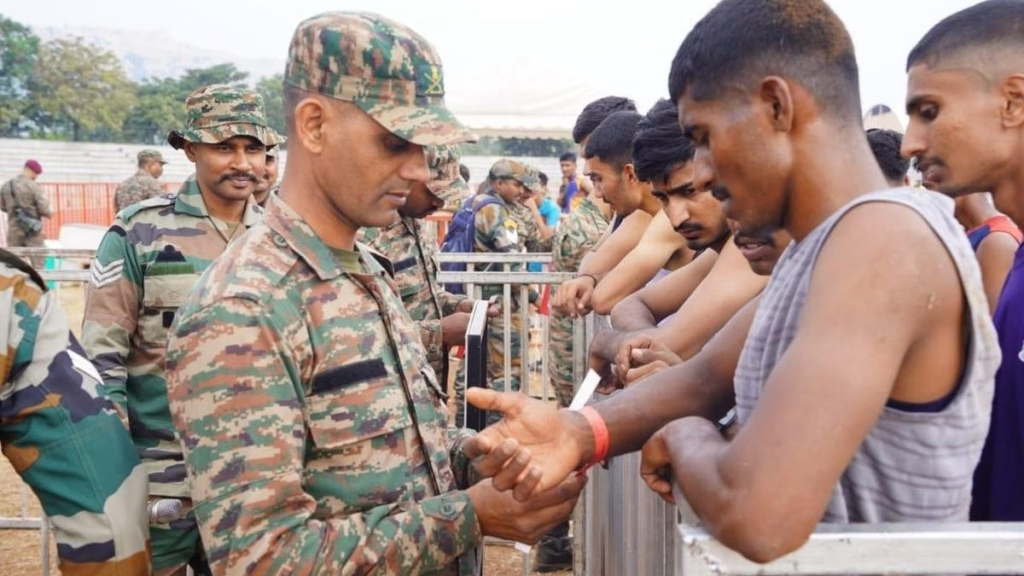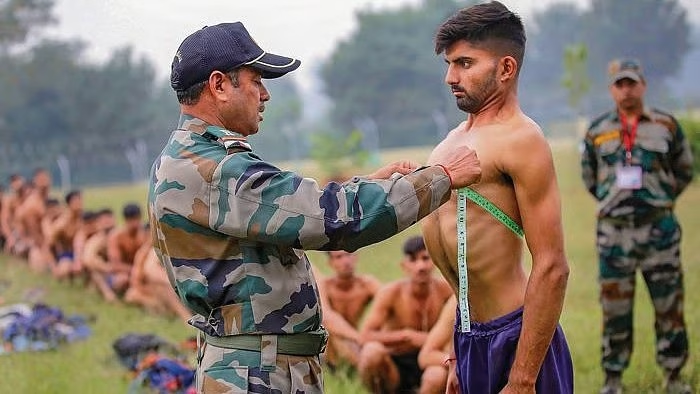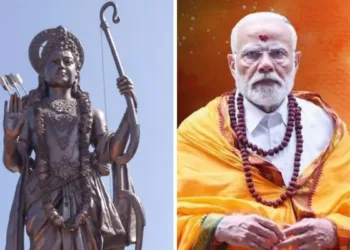The Indian Army is preparing for a massive recruitment expansion that could reshape its personnel strategy. Facing a critical shortage of approximately 1.8 lakh soldiers, military leadership is considering more than doubling annual Agniveer intake from the current 45,000-50,000 to over 1 lakh recruits—a move aimed at addressing one of the most pressing challenges in recent military history.
Table of Contents
Army Agniveer Expansion at a Glance
| Recruitment Details | Current Status | Proposed Target |
|---|---|---|
| Annual Intake | 45,000-50,000 | 1 lakh+ |
| Total Shortage | 1.8 lakh soldiers | To be addressed |
| Recruited (2022-2025) | 1.75 lakh | Completed/Ongoing |
| First Batch Separation | December 2026 | Upcoming |
| Annual Retirements | 60,000-65,000 | Continuing |
The Perfect Storm: How the Shortage Grew
The current personnel deficit stems from multiple factors converging simultaneously. The COVID-19 pandemic forced recruitment suspension in 2020 and 2021, yet 60,000-65,000 soldiers continued retiring annually during this period. This created an immediate gap that predates the Agnipath scheme’s introduction in June 2022.

When Agnipath launched, initial plans capped Army recruitment at 1.75 lakh Agniveers over four years ending in 2025. However, ongoing retirements have added an additional shortfall of approximately 20,000-25,000 personnel annually, making the expansion inevitable.
The 2026 Challenge: A New Phase Begins
December 2026 marks a critical turning point when the first batch of Agniveers completes their four-year tenure. With only 25% eligible for permanent enrolment into regular cadre, the remaining 75% will exit service, creating another wave of personnel outflow that must be offset through increased recruitment.
Training Infrastructure: Ready for the Challenge
Sources indicate the revised recruitment plan aims for approximately 1 lakh Agniveers annually over the next several years. The expansion will be carefully calibrated with regimental training center capacity to maintain standards without overstretching infrastructure. The Indian Army’s training facilities are reportedly being upgraded to handle the increased intake while ensuring quality preparation.

Strategic Implications for National Defense
This dramatic recruitment surge reflects the military’s commitment to maintaining operational readiness despite demographic and structural challenges. The Agnipath scheme, initially controversial for its four-year tenure model, is now becoming central to addressing long-term personnel needs while offering youth valuable military experience and skills.
The expansion also demonstrates confidence in the Agniveer model, which has proven effective in Operation Sindoor and other deployments, showcasing the capabilities of short-service recruits when properly trained and motivated.
What This Means for Aspirants
For young Indians aspiring to military service, this represents unprecedented opportunity. With recruitment potentially doubling, selection chances improve significantly while maintaining merit-based standards. The scheme offers competitive packages starting at ₹4.76 lakh annually in the first year, rising to ₹6.92 lakh by the fourth year, plus a ₹11.71 lakh tax-free Seva Nidhi package upon completion.
For official Agniveer recruitment details and applications, visit Join Indian Army.
FAQs
Q: Why is the Indian Army facing such a massive troop shortage?
A: The 1.8 lakh shortage resulted primarily from recruitment suspension during COVID-19 in 2020-2021, while regular retirements of 60,000-65,000 soldiers continued annually. This gap existed before Agnipath launched in 2022, and ongoing retirements combined with upcoming Agniveer separations from December 2026 necessitate the dramatic intake increase.
Q: Will doubling Agniveer recruitment compromise training quality?
A: According to sources, the expansion will be carefully calibrated with training capacity at regimental centers. Infrastructure upgrades are underway to ensure standards are maintained and facilities aren’t overstretched, allowing the Army to handle approximately 1 lakh recruits annually while preserving training quality that has proven effective in operational deployments.








